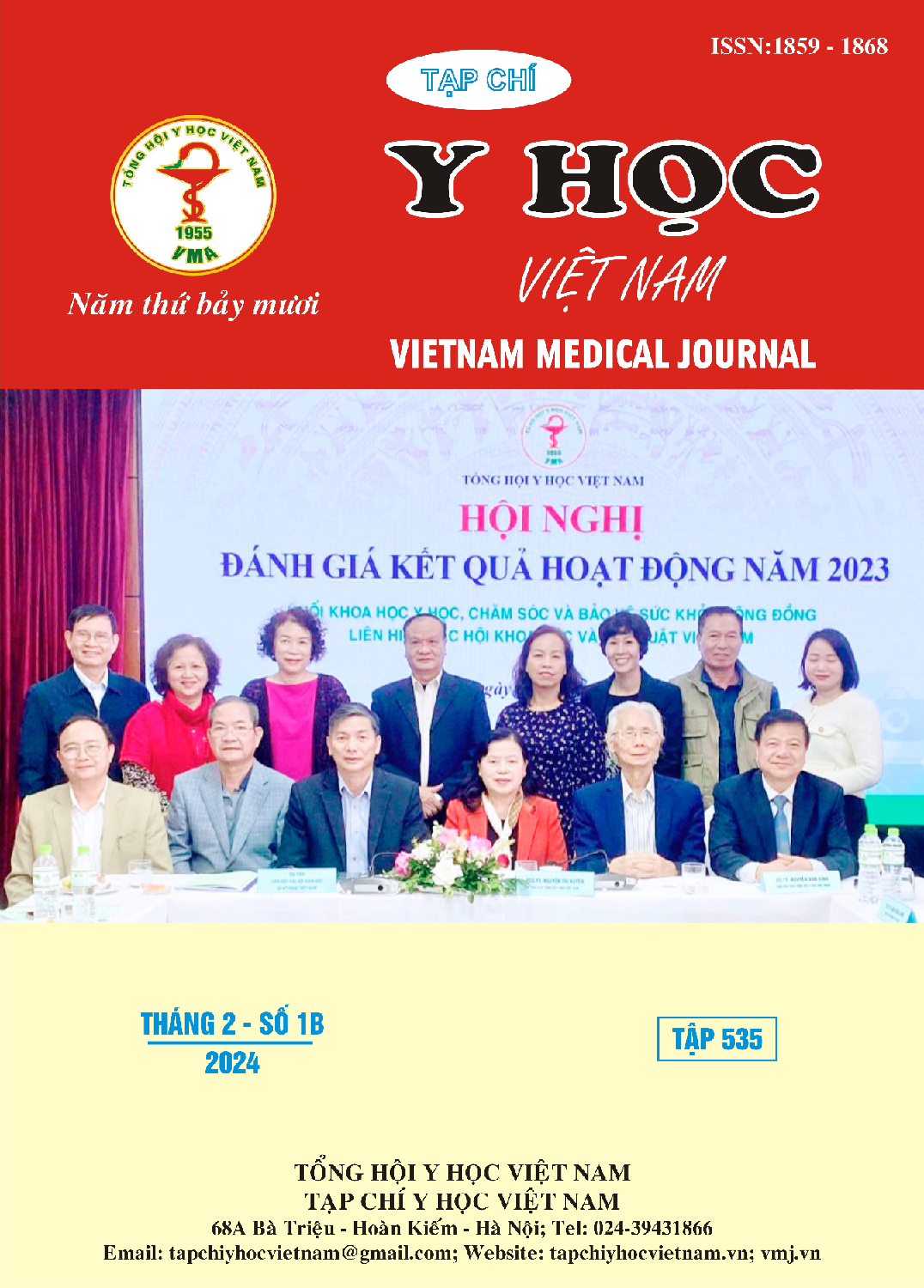ANATOMICAL OF THE TERMINATED TYPE OF THE FACIAL ARTERY TO PREVENT VISUAL COMPLICATIONS DURING F INTERVENTIONS
Main Article Content
Abstract
Introduction: Vascular complications of the facial artery tributaries are frequently seen in the angular, dorsum of the nose, tip of the nose, and glabellar region. The present study documents anatomical information about the facial artery. Materials and Methods: A prospective descriptive study of 30 half-face dissection samples from 15 adult Vietnamese corpses. Result: The commonest in our series, The facial artery terminated as an angular facial vessel in 14/30 cases (47%) (Type 1). The other one, It terminated as a superior labial vessel in 8/30 cases (27%) (Type 2), as a lateral nasal vessel in 7/30 (23%) (Type 3) and as a underdeveloped vessel in 1/30 cases (3%) (Type 4). Discussion: The facial artery and its vessel are extremely variable as regards its mode of termination. There is a special type (a underdeveloped vessel) in our study. Conclusion: Careful vascular workup prior to facial transplantation and unipedicled flap procedures is therefore essential
Article Details
Keywords
facial artery, terminated types of facial artery.
References
2. Ge NN, McGuire JF, Dyson S, Chark D. Nonmelanoma skin cancer of the head and neck II: surgical treatment and reconstruction. American Journal of Otolaryngology. 2009;30(3):181–192.
3. Boyd AS, Shyr Y, King LE. Basal cell carcinoma in young women: an evaluation of the association of tanning bed use and smoking. Journal of the American Academy of Dermatology. 2002;46(5): 706–709.
4. Lee W, Koh IS, Oh W, Yang EJ. Ocular complications of soft tissue filler injections: A review of literature. J Cosmet Dermatol. 2020 Apr;19(4):772-781. doi: 10.1111/jocd.13213. Epub 2019 Nov 11. PMID: 31709739.
5. Salgarelli AC, Bellini P, Multinu A, Magnoni C, Francomano M, Fantini F, Consolo U, Seidenari S. Reconstruction of nasal skin cancer defects with local flaps. J Skin Cancer. 2011;2011:181093. doi: 10.1155/2011/181093. Epub 2011 Jun 7. PMID: 21773033; PMCID: PMC3135072.
6. Dupoirieux L, Plane L, Gard C, Penneau M. Anatomical basis and results of the facial artery musculomucosal flap for oral reconstruction. Br J Oral Maxillofac Surg. Feb 1999;37(1):25-28. doi:10.1054/bjom.1998.0301.
7. Furukawa M, Mathes DW, Anzai Y. Evaluation of the facial artery on computed tomographic angiography using 64-slice multidetector computed tomography: implications for facial reconstruction in plastic surgery. Plast Reconstr Surg. Mar 2013;131(3):526-535. doi:10.1097 /PRS.0b013e31827c6f18.
8. Koziej M, Trybus M, Hołda M, et al. Anatomical Map of the Facial Artery for Facial Reconstruction and Aesthetic Procedures. Aesthet Surg J. Oct 15 2019;39(11):1151-1162. doi:10.1093/asj/sjz028.
9. Pilsl U, Anderhuber F, Neugebauer S. The Facial Artery-The Main Blood Vessel for the Anterior Face? Dermatol Surg. Feb 2016;42(2): 203-208. doi:10.1097/dss. 0000000000000599
10. Lohn JW, Penn JW, Norton J, Butler PE. The course and variation of the facial artery and vein: implications for facial transplantation and facial surgery. Ann Plast Surg. Aug 2011;67(2):184-188. doi:10.1097/SAP.0b013e31822484ae.


